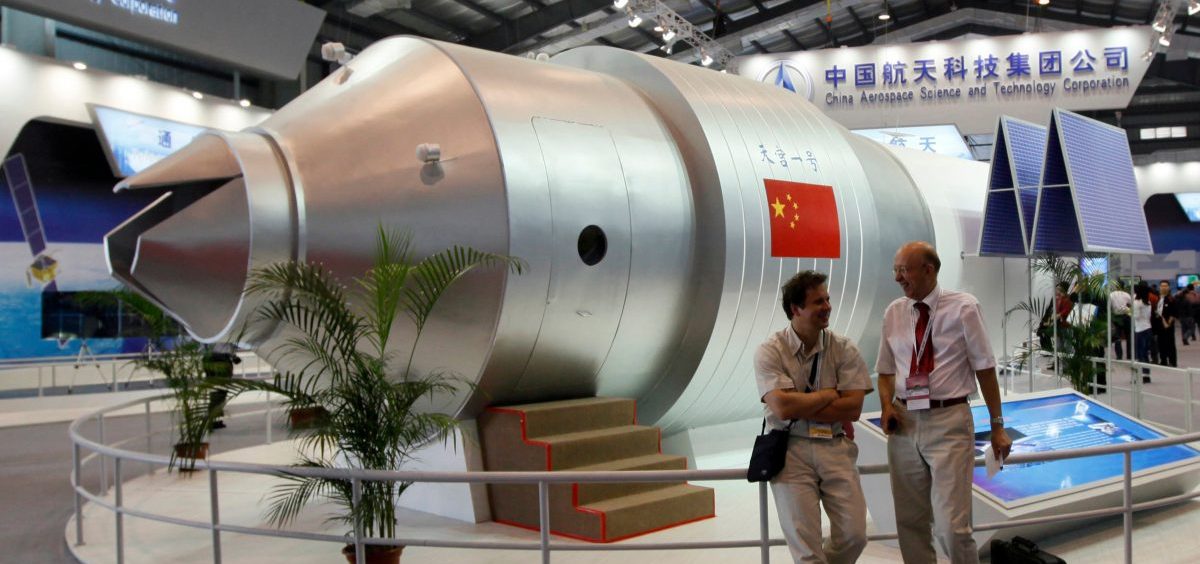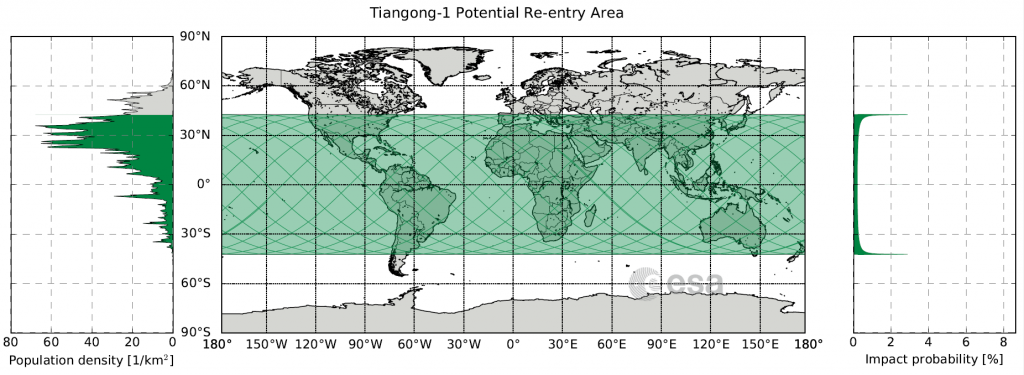News

Chinese Space Lab Expected To Crash To Earth On Sunday Night
By: Camila Domonoske | NPR
Posted on:
China’s Tiangong-1 space lab will fall from the sky on Sunday evening, according to the latest estimates from the European Space Agency, or ESA.
The derelict spacecraft has been slowly falling out of its original orbit for several years. It will largely, though not entirely, burn up on reentry. (If that sounds alarming, remember that space debris falls to Earth with some regularity, and has never injured a human being.)
The “re-entry prediction window” from ESA has tightened significantly, to a four-hour window centered on 1 a.m. UTC on Monday. In the continental U.S., that’s Sunday evening.
As for location, ESA says the craft will fall somewhere between latitudes 43 North and 43 South. That includes a vast swath of the planet, including the entirety of Africa, most of South America, the continental U.S. from Boston south, and much of China.
The experts can’t get more specific than that.
“At no time will a precise time/location prediction from ESA be possible,” the organization says.
As NPR’s Scott Neuman noted in our earlier reporting, this is emphatically not an April Fool’s joke.
“The 34-foot-long, 18,000 pound Tiangong-1, or “Heavenly Palace-1″ was launched in 2011 as China’s first attempt at an orbiting space lab,” Scott wrote. “It was occupied by two separate crews of three astronauts, or taikonauts, each – a mission in June 2012 included China’s first female astronaut, Liu Yang. A year later, another crew included the country’s second woman in space, Wang Yaping.”

The demise of Tiangong-1 has been long anticipated.
In 2016, an amateur satellite tracker observed that the satellite appeared to be on track for an uncontrolled fall of orbit. That was months before the Chinese government acknowledged that the space lab would be re-entering the earth.
At the time, China was predicting a late 2017 re-entry, but later estimates pushed that date back into early 2018.
“Space junk this size falls to Earth a few times a year,” NPR’s Nell Greenfieldboyce reports, but “it’s usually something like a spent rocket stage — not a home-away-from-home for space travelers.”
That makes this re-entry an interesting one, she says. But it’s not particularly dangerous, Bill Ailor, of the Aerospace Corporation’s Center for Orbital and Reentry Debris Studies, tells Nell:
” ‘It’s just not a very likely event that a particular person would have a problem with it,’ he says.
“In 60 years of space exploration, only one person — an American woman named Lottie Williams — is known to have been struck by falling space junk, says Ailor, ‘and it was just like a piece of fabric material that kind of brushed her on the shoulder.’
“He hopes that someone gets to see the bright streaks created by Tiangong-1 breaking up and burning.
” ‘It would be a beautiful thing to watch,’ says Ailor.
‘But since most of our planet is covered by oceans, he says the most likely scenario is that it will come down over the water and never be seen or heard from again.’ “
If, by chance, the debris lands a little closer to home, ESA warns it’s not yours to keep.
9(MDI4ODU1ODA1MDE0ODA3MTMyMDY2MTJiNQ000))

